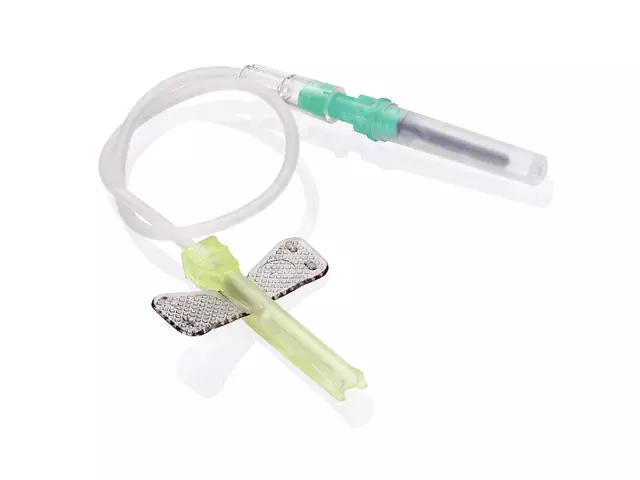Micro EDTA Tubes: Key Uses and Proper Handling for Reliable Blood Analysis
In the realm of clinical diagnostics and research, ensuring accurate blood analysis is essential. Micro EDTA tubes are an integral part of the process, as they allow for the collection and preservation of blood samples without clotting. These tubes are especially crucial in pediatric or neonatal cases, where only small blood volumes are needed.
In this article, we will focus on two primary aspects: the applications of micro EDTA tubes in laboratory diagnostics and best practices for handling and storing these tubes to maintain the integrity of the samples.
Applications of Micro EDTA Tubes
Micro EDTA tubes are widely used across various laboratory applications, especially when small blood samples are required. Their primary function is to prevent blood from clotting, making them ideal for a variety of tests. Let’s explore the key areas where these tubes are commonly used:
1. Hematology Tests
Micro EDTA tubes are most commonly used for hematology tests, which involve analyzing the different components of blood. By preventing clotting, EDTA ensures the blood sample remains in a state suitable for tests such as:
Complete Blood Count (CBC): A CBC measures various components of blood, including red blood cells, white blood cells, hemoglobin, and platelets. This test helps diagnose conditions such as anemia, infections, and blood cancers. Micro EDTA tubes ensure that the sample remains unclotted and preserves the integrity of the blood cells for accurate results.
Platelet Function Tests: Platelets are critical for blood clotting. By preventing clotting with EDTA, micro EDTA tubes ensure the accurate measurement of platelet count and function.
These tests require anticoagulation, and micro EDTA tubes ensure that the blood remains in a state that accurately reflects the number and type of blood cells.
2. Blood Gas Analysis
Blood gas analysis is an important diagnostic test used to measure the levels of oxygen and carbon dioxide in the blood. This is crucial in assessing respiratory function, especially in critical care patients. Micro EDTA tubes play a significant role here by preserving the sample in its uncoagulated state, allowing accurate measurement of blood gases.
Without the anticoagulant properties of EDTA, blood could clot quickly, resulting in inaccurate readings and invalid test results. Using micro EDTA tubes ensures that the blood sample remains suitable for precise blood gas analysis, aiding in the management of conditions such as respiratory distress and metabolic disorders.
3. Molecular Diagnostics
In molecular diagnostics, micro EDTA tubes are essential for preserving DNA, RNA, or whole blood for testing. For example, micro EDTA tubes are used in Polymerase Chain Reaction (PCR) tests, which amplify DNA samples for analysis. EDTA helps preserve the DNA by preventing clotting and degradation, ensuring that the genetic material remains intact for analysis.
These tubes are ideal for the storage and transportation of blood samples used in genetic testing, infectious disease detection, and research applications. Their anticoagulant properties maintain the integrity of the sample, allowing for accurate PCR results and other molecular assays.
4. Blood Typing and Crossmatching
Blood typing and crossmatching are essential for ensuring safe blood transfusions. These tests help determine the compatibility between donor and recipient blood types. Micro EDTA tubes are often used in these procedures because they prevent the blood from clotting, preserving the plasma for testing. Accurate blood typing and crossmatching are critical for patient safety, especially in emergency situations or when multiple transfusions are required.
Best Practices for Handling and Storing Micro EDTA Tubes
To ensure that micro EDTA tubes perform their intended function and provide accurate results, proper handling and storage are essential. Below are some best practices for maintaining sample integrity:
1. Proper Mixing of the Sample
After blood collection, it’s important to mix the blood sample thoroughly with the anticoagulant in the micro EDTA tube. This ensures that the EDTA is evenly distributed throughout the sample, preventing clot formation. However, avoid shaking the tube too vigorously, as this can cause hemolysis (damage to red blood cells), which could affect the results of some tests.
Gently inverting the tube 8–10 times is usually sufficient to ensure proper mixing. Proper mixing ensures that the sample is ready for analysis without any risk of clotting.
2. Immediate Processing or Refrigeration
Once the blood sample has been collected in the micro EDTA tube, it should be processed as soon as possible. If immediate analysis is not possible, store the sample at the proper temperature to prevent degradation of blood cells or molecular material.
Typically, micro EDTA tubes should be refrigerated at 2-8°C if they cannot be processed immediately. However, avoid freezing the samples, as freezing can damage the blood cells and alter the composition of plasma and cellular components, making the results inaccurate.
3. Avoid Overfilling the Tube
Each micro EDTA tube is designed to handle a specific volume of blood, typically 1–2 mL. Overfilling the tube can lead to inaccurate test results because there may not be enough anticoagulant to prevent clotting, or the sample may not be mixed adequately. Always follow the manufacturer’s instructions to ensure proper sample volume and adequate anticoagulation.
4. Check for Proper Sealing
Ensure that the micro EDTA tube is properly sealed with the cap or stopper to prevent contamination. Leaks can lead to sample loss or contamination, which could affect the reliability of test results. When transporting the sample, ensure the tubes are tightly sealed to avoid spillage or exposure to external contaminants.
5. Regular Sensor and Labeling Checks
In some laboratory settings, micro EDTA tubes are automatically analyzed with the use of sensors or barcode scanners. Ensure that the tubes are properly labeled and free from any damage that could prevent scanning or tracking. The correct labeling is critical to avoid sample mix-ups, especially when dealing with multiple patient samples.
6. Observe Expiry Dates and Product Integrity
It’s important to always check the expiration dates on micro EDTA tubes before use. Over time, the effectiveness of the anticoagulant may decrease, potentially affecting the quality of the blood sample. Additionally, ensure that the tubes are stored in appropriate conditions and have not been exposed to extreme temperatures or humidity.
Conclusion
Micro EDTA tubes are essential tools in clinical diagnostics, research, and medical testing, offering the ability to preserve blood samples in an anticoagulated state for a wide range of applications, from hematology and blood gas analysis to molecular diagnostics. By understanding their key applications and following best practices for handling and storage, laboratories can ensure that samples remain viable and accurate, leading to better patient outcomes and reliable research data.
Whether you are working with small blood samples from pediatric patients or collecting critical samples for genetic testing, micro EDTA tubes are a key component in maintaining the quality and integrity of your samples. Proper mixing, storage, and handling are crucial to ensure that your samples are preserved and processed correctly, allowing for reliable and accurate diagnostic results.




